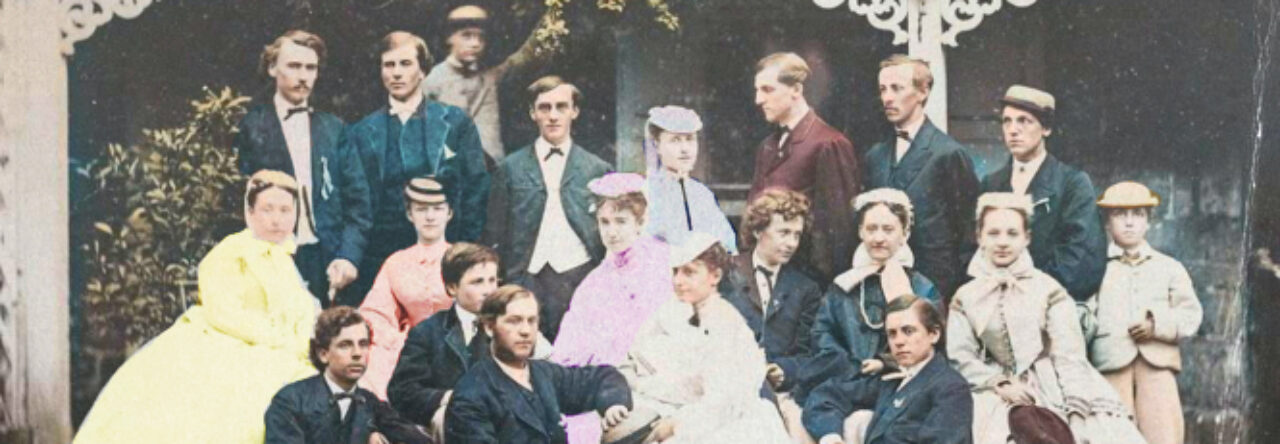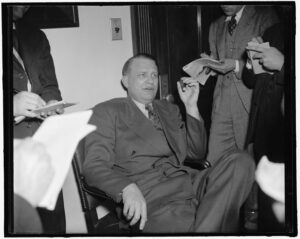Beginning secondary source research, in my opinion, can be even tougher. But I have found two key takeaways, so far when it comes to secondary sources. One is that the difficulty in finding secondary sources comes in choosing the correct key terms- not too specific or too broad- and applying them to the correct databases. So, finding these terms and choosing the right databases is essential. Moreover, after class discussions and readings this semester, I have found it helpful to imagine the perfect source and then design key terms around what that source might include. For me, this came from developing good research questions, and then imagining the source that might perfectly answer that question.
War and Labor Board
For this project, I began by attempting to discover the role of Regional War and Labor Boards in the early 1940s. LaVallee served on one in Denver, and this is where he was accused of communist activities. As such, I figured it would be important to discover the roles he held and duties for which he was responsible. Honestly, in my original search, I could not find many sources that specifically dealt with regional labor boards and communism. So, I widened my search and tried to do some research on roles of the Regional War Labor Boards in general. This too was frustrating and produced few results.

Political Cartoon promoting Labor from the National Archives and Records Administration, Wikimedia Commons
It was then that I decided it was time to close my laptop and send an email to Professor Pinsker, asking for advice on where I might find more sources on this topic. The email was sent via scheduled send, of course, because at this point it was about 1:30am. When you find yourself in the dark, over an hour deep in failed searches about World War II labor administration, I’ve found it’s a good time to temporarily call it quits.
When I resumed the search at a more respectable hour, I realized that I might have to not only expand my topic, but also expand my database list. I had mostly limited my search to JSTOR and America: History & Life. When I expanded my search to Google Books (at Professor Pinsker’s suggestion), I was still not able to find much on regional labor boards. But, I did find a book which included a chapter on the National War Labor Board. Though it wasn’t exactly what I was looking for, it still gives me some information generally about War Labor Boards, and I know that I will keep trying, more creatively, as I continue researching.
Red Scare
Another main question I wanted to answer surrounded the role that communism played in universities during the Second Red Scare. For LaVallee, an academic accused of once being a communist sympathizer, the answer to this question would have been extremely influential. I was able to identify the correct combination of keywords and databases more quickly for this question and immediately got more hits than previous searches about the War Labor Boards.
Terms that worked for this second topic included: AAUP (including spelling out the acronym), Cold War, House Un-American Activities Committee, and the best term: academic freedom. Terms like WWII (spelled out) and communism seemed to confuse the search engine – I believe they were too broad either geographically or chronologically. Curiously, McCarthyism did not turn up many usable results. The combination of Cold War and academic freedom was particularly useful. Using JSTOR and America: History & Life I quickly found a few journal articles that loo
-ked worth my while. I expanded my search to Jumpstart, which produced a journal article, Google Books, which did not have much, and EbscoHost which generated a book that had a section dedicated to the topic.
Though this process was certainly frustrating, I think it taught and continued to remind me that it is important to keep topic in mind when you are deciding where you look for sources. Because of the nature of academic freedom as a topic, it makes sense that academics at universities would write about it. This explains the abundance of journal articles: the topic is directly pertinent to a large demographic that writes and researches in peer-reviewed sources. The first topic, though, is uber specific and seemingly lacks as natural an interested audience of historians and researchers. This means that I will have to be more creative in locating sources related to it.
A final quick takeaway: book reviews are your friend, especially in the initial stages of research! From the book review that I found, I know that I probably won’t read the whole book, but I did get some others in the historiography section that seem helpful and about half of the book sections look like they could be useful.
Once I had my sources organized, I went through them more carefully than a quick skim, and these were my findings:
One of the main contributions these sources made to my project was giving me more ideas for how to research the Times section of Life and Times. I would like to look into further O. John Rogge, a lawyer who fought against the House Unamerican Activity Committee and several other professors that were removed during the McCarthy era under the guise of being communists. I will be interested to see if these professors were granted a hearing by their universities because while LaVallee was, other professors were not even given that opportunity to defend themselves.
I want to learn more about the Hiss and Smith Acts and the following trials, as well as the other active institutions which fought for academic freedom such as the ACLU and Progressive Education Association. I would also like to find out if LaVallee was tenured as one of the articles discussed in detail the factors of public vs private institutions and tenured vs untenured status as protections for academic freedom.
Closing Thoughts and Discoveries:
First, the California Plan held that communists could not be employed at academic institutions, not because of their political beliefs, but because they had abandoned objectivity which, its creators hold as vital for employment in an academic institution. This plan guided institutions in their “trial” process and determined what due process meant in these situations.
Secondly, the sources also suggested that LaVallee’s case was not particularly out of character in students’ reactions to the situation. In other, similar, cases of the suspension/firing of professors, it seems as if students protest the removal intensely. However, the extreme faculty upset at Dickinson seems unusual for the time. In most cases, the administration is painted as paranoid villains, out to get pillars of academic freedom. Recognizing this narrative will help me in attempting to prevent bias when I write more about this story, myself.
Bibliography
“Academic Freedom – Censure List.” American Association of University Professors. Accessed March 27 2023. [URL]
Brown, Ralph S., Kurland, Jordan E. “Academic Tenure and Academic Freedom.” Law and Contemporary Problems 53, no. 3 (1990): 325-55.[JSTOR]
Cain, Timothy Reese. “’Friendly Public Sentiment’ and the Threats to Academic Freedom.” History of Education Quarterly 58, no. 3 (2018): 428-35.
Deery, Phillip. “Political Activism, Academic Freedom and the Cold War: An American Experience.” Labor History 98, (2010): 183-205. [JSTOR]
Franklin, RW. “Lessons from the Past Illuminate the Curran Affair: ‘No Ivory Tower: McCarthyism and the Universities.’” Review of No Ivory Tower: McCarthyism and the Universities, by Ellen Schrecker. College Teaching, 35, no.2 (1987): 50-52. [JSTOR]
Kersten, Andrew E. Labor’s Home Front: The American Federation of Labor During World War II. NYU Press, 2006. [Google Books]
McCumber, John. “Rationalizing Academic Repression: The Allen Formula.” In The Philosophy Scare, 135-153. Chicago University Press, 2016. [EbscoHost]



Leave a Reply